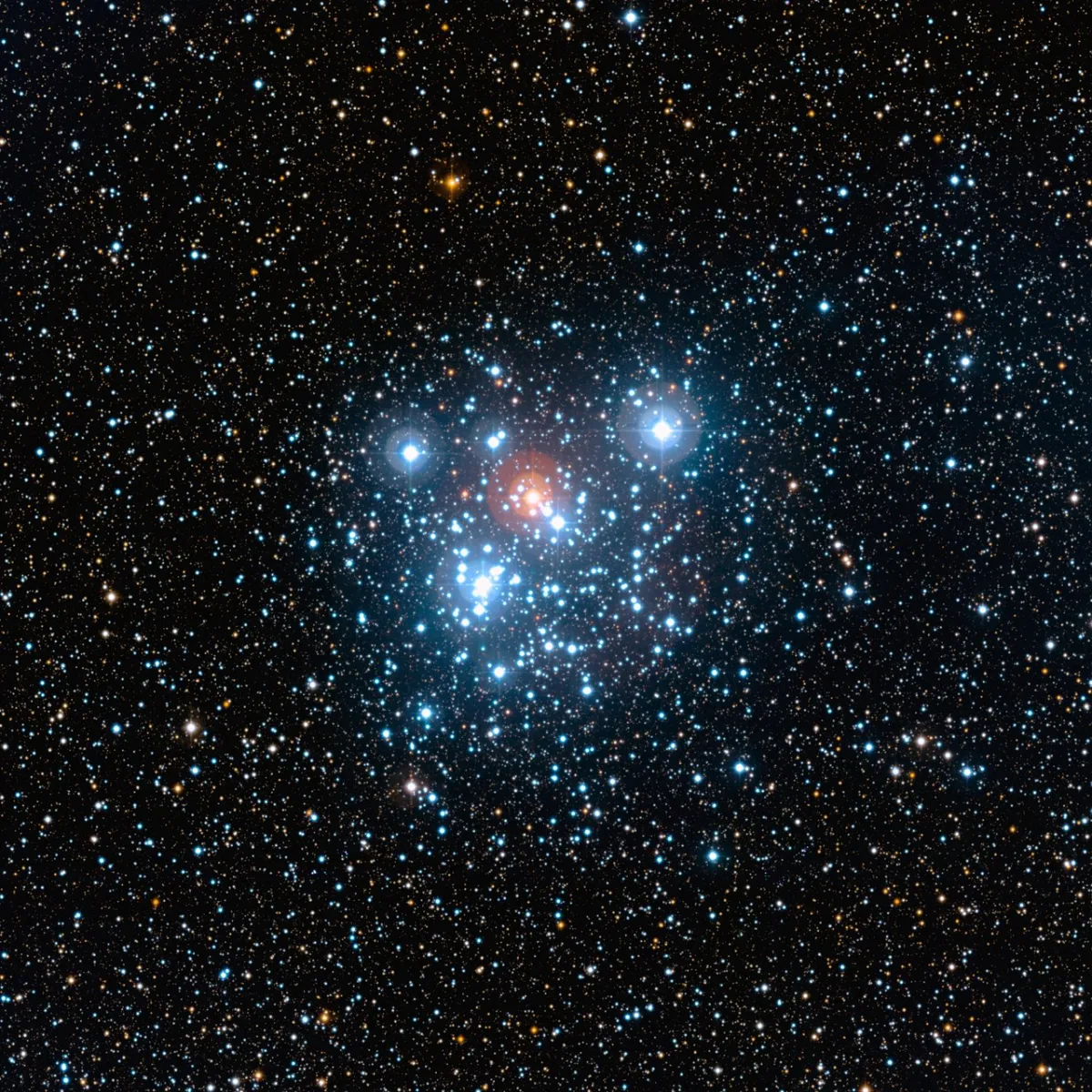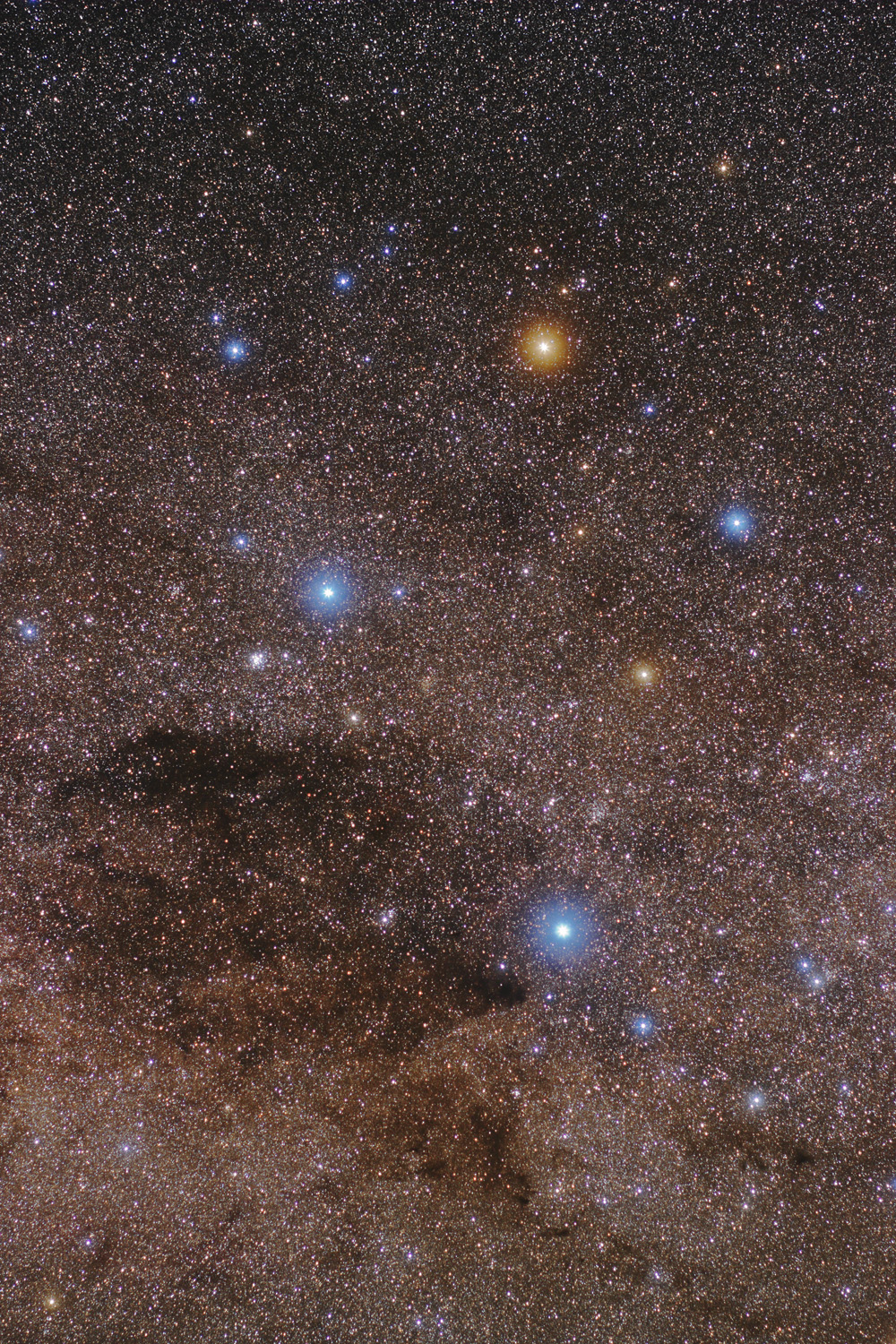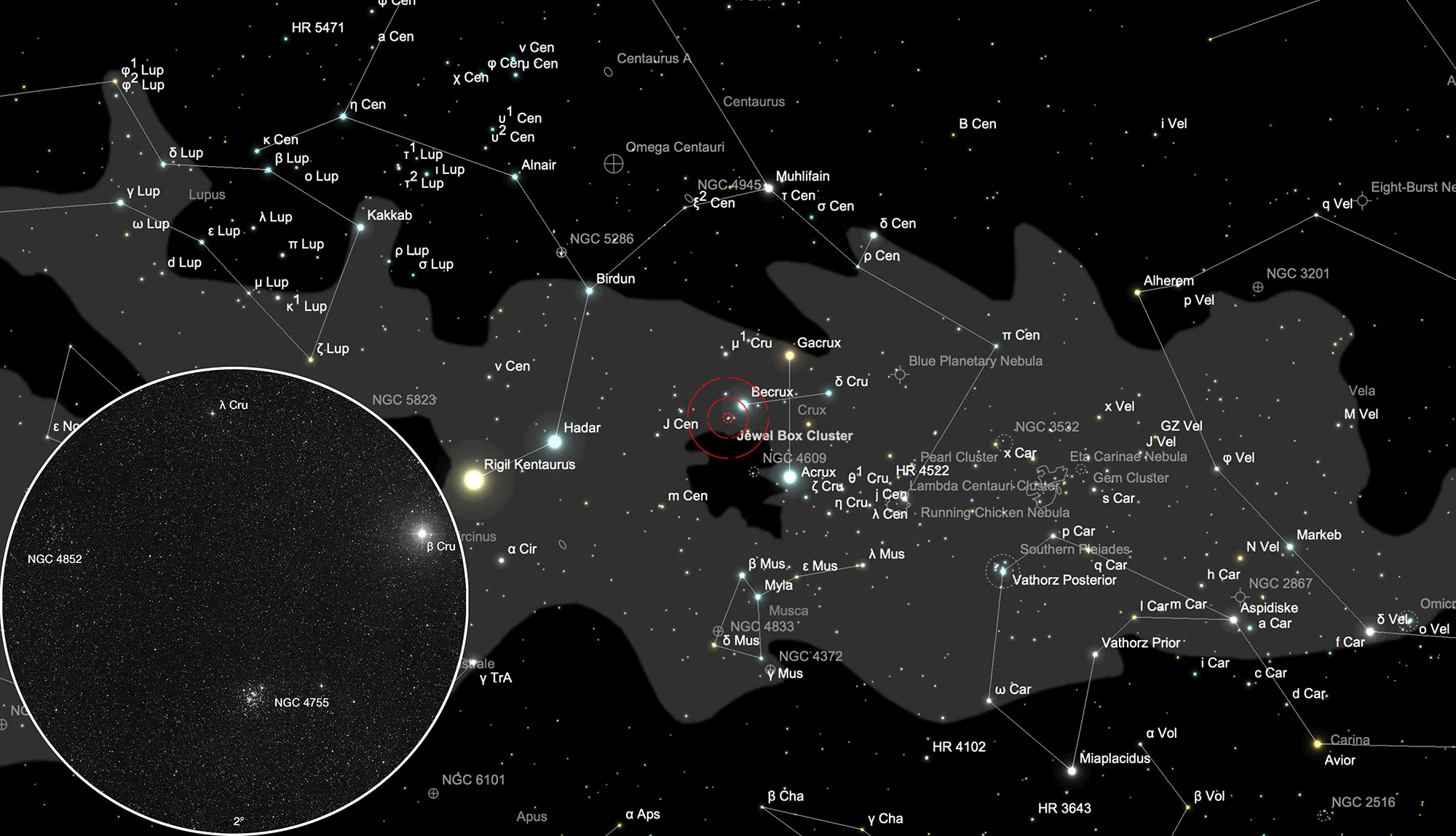Jewel Box, Kappa Crucis Cluster (NGC 4755)


NGC 4755
This cluster was discovered in in 1751 by French astronomer Nicolas-Louis de Lacaille discovered. He used a small ½-inch refractor during his expedition to the Cape of Good Hope and classified it as «nebulous stars by cluster» (Lac II-12) with the notes: «Five or six small stars between two of the sixth magnitude.» [8]
On 26 May 1826 Scottish astronomer James Dunlop first observed this cluster from Parramatta, NSW, with his 9-inch reflector, listed it as Δ 301. Based on six observations he wrote: «(κ Crucis, Bode) is five stars of the 7th magnitude, forming a triangular figure, and a star of the 9th magnitude between the second and third, with a multitude of very small stars on the south side.» [50]
John Herschel, observing with his 18.3-inch reflector at Cape of Good Hope first observed the cluster on 14 March 1834. He listed it as h 3435. The first description of his four observation reads as follows: «The central star (extremely red) of a most vivid and beautiful cluster of from 50 to 100 stars. Among the larger there are one or two evidently greenish; south of the red star is one 13 mag, also red; and near it is one 12 mag, bluish.» He also created a detailed drawing of this cluster. [11]
| Designation | NGC 4755 |
| Type | OCL (I3r) |
| Right Ascension (J2000.0) | 12h 53m 39.0s |
| Declination (J2000.0) | -60° 21' 42" |
| Diameter | 10 arcmin |
| Visual magnitude | 4.2 mag |
| Metric Distance | 1.976 kpc |
| Dreyer Description | Cl, vL, st vB (κ Crucis) |
| Identification, Remarks | h 3435; GC 3275; OCL 892; ESO 131-SC16; Jewel Box, Kappa Cru cluster |
NGC 4852
This cluster was discovered on 30 April 1826 by James Dunlop and listed as Δ 311. His summery description based on four observations reads: «A very faint pretty large nebula about 6' or 8' diameter, round figure, resolvable into very minute stars. Several stars of some considerable magnitude appear scattered among the minute stars of the nebula, but they are only the continuation of a branch of small stars which run over the place where the nebula is; the stars in the nebula are very gradually, but not much, compressed to the centre.» [?]
John Herschel listed this cluster as h 3449 and made two observations. Sweep 434 (31 March 1834): «A very poor cluster of about 70 stars 11...15th magnitude, very loosely scattered over a space about 15' long and 8' broad.» Sweep 790 (7 June 1837): «Cluster VII. pretty rich, large, irregularly round, 10' diameter, 80 or 100 stars, 10, 11, 12 mag, with a stippling of much smaller ones.» [11]
| Designation | NGC 4852 |
| Type | OCL (II2p) |
| Right Ascension (J2000.0) | 13h 00m 09.0s |
| Declination (J2000.0) | -59° 36' 48" |
| Diameter | 12 arcmin |
| Visual magnitude | 8.9 mag |
| Metric Distance | 1.330 kpc |
| Dreyer Description | Cl, L, pRi, iR, st 10 |
| Identification, Remarks | h 3449; GC 3335; OCL 894; ESO 131-SC17 |
Finder Chart
The open cluster NGC 4755 is located in the constellation Crux approximately 1° towards southeast from the 1.3 mag bright star Mimosa (β Crucis) and is visible to the naked eye. About 1° northeast of NGC 4755 is the smaller cluster NGC 4852 and between these two is the IAU constellation boundary to the constellation Centaurus. Both clusters are not visible from Europe. On 5 April NGC 4755 is in opposition with the Sun and is therefore highest in the sky at local midnight.
